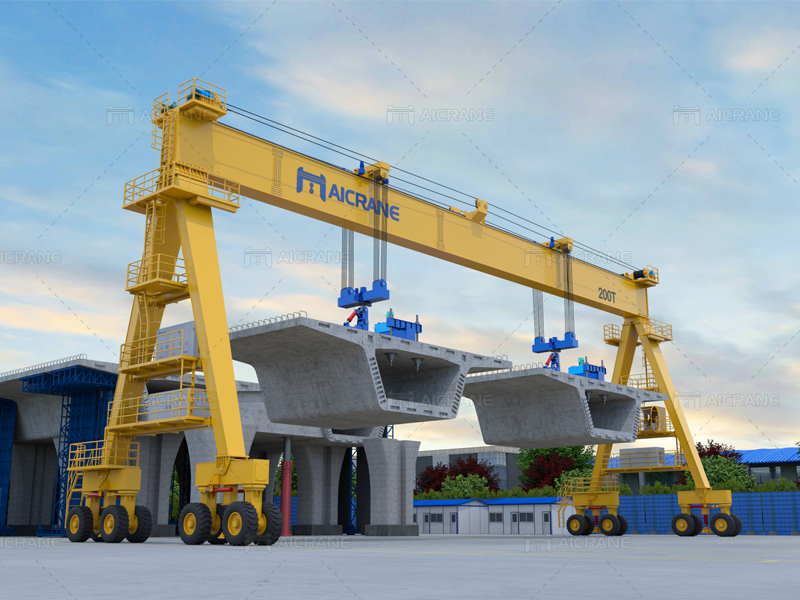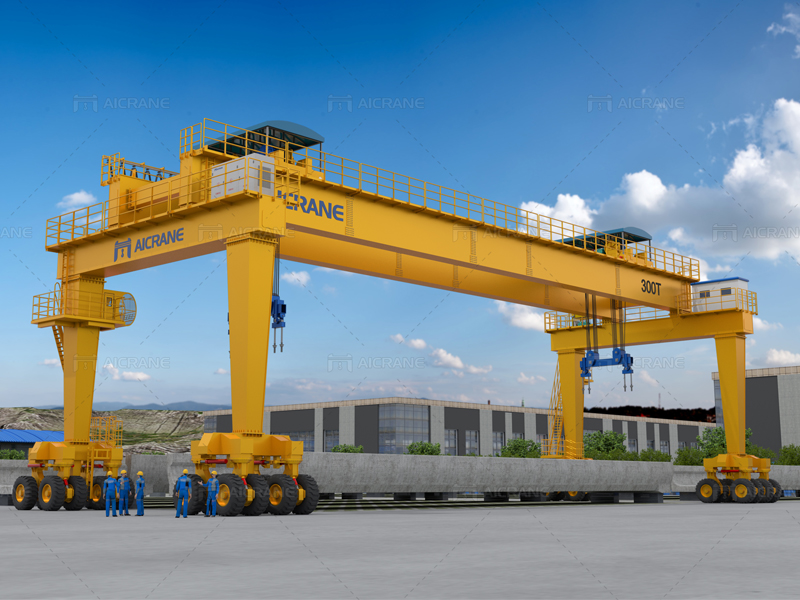The construction of bridges is a complex and intricate process, requiring specialized equipment to handle the unique challenges posed by each project. One crucial piece of machinery in bridge construction is the bridge building crane. These cranes play a pivotal role in lifting and placing heavy materials during the construction of bridges, ensuring precision and efficiency. As we delve into the world of bridge building cranes, it becomes evident that there are various types, each tailored to meet specific project requirements.

Overhead Bridge Cranes: The Workhorse of Bridge Construction
One of the most common types of bridge building cranes is the overhead bridge crane. This crane is characterized by its elevated runway system, which allows it to traverse the length of the bridge being constructed. The bridge girder, typically made of steel, spans the width of the bridge and provides a stable platform for the crane to operate.
Overhead bridge cranes are known for their versatility and ability to handle a wide range of loads. They come equipped with a trolley mechanism that moves along the girder, enabling precise positioning of materials. The hoist, mounted on the trolley, is responsible for lifting and lowering heavy components such as steel beams and concrete segments.
Underslung Bridge Cranes: Precision from Below
In contrast to overhead bridge cranes, underslung bridge cranes operate from beneath the bridge structure. These cranes are suspended from the bridge and move along the lower flanges of the bridge girders. The underslung configuration offers advantages in terms of minimizing the overall height of the crane, making it suitable for projects with height restrictions.
Underslung bridge cranes are particularly useful when the construction site demands a lower profile or when there are constraints on the clearance above the bridge. Their design allows for efficient material handling without compromising on stability and precision.
Gantry Cranes: Mobile Powerhouses on the Construction Site
Gantry cranes are another category of bridge building cranes that provide mobility and flexibility. Unlike overhead and underslung cranes, mobile gantry cranes are not confined to a fixed runway. Instead, they operate on a set of rails or wheels that allow them to move horizontally along the construction site.
Gantry cranes are suitable for a variety of bridge construction projects, including those where the terrain may be challenging or uneven. Their ability to traverse the construction site offers a distinct advantage in terms of adaptability, making them indispensable in projects with complex geometries or varying elevations.

Launching Gantries: Building Bridges in Suspense
Launching gantries represent a specialized type of bridge building crane designed for the construction of elevated structures, such as cable-stayed and segmental bridges. These gantries are used to install bridge segments or sections gradually, allowing for the incremental construction of the bridge deck.
Launching gantries are typically mounted on the completed portions of the bridge and use powerful lifting mechanisms to hoist and precisely position segments into place. This methodical approach to construction ensures that the bridge is built with precision and structural integrity.
Factors Influencing the Choice of Bridge Building Cranes
The selection of a specific type of bridge building crane depends on various factors, including the design of the bridge, the construction site’s topography, and the project’s specific requirements. For example, a long-span suspension bridge may necessitate the use of launching gantries for segmental construction, while a straightforward beam bridge might be efficiently constructed using overhead bridge cranes.
Additionally, considerations such as lifting capacity, outreach, and environmental conditions play a crucial role in determining the most suitable crane for a particular project. Engineers and project managers collaborate to analyze these factors and make informed decisions to optimize construction processes.
Safety Considerations in Bridge Building Crane Operations
Safety is paramount in any construction project, and bridge building crane operations are no exception. The sheer scale and weight of materials being handled make safety measures critical to preventing accidents and ensuring the well-being of construction workers.
Regular inspections of the crane components, including the bridge girder, trolley, and hoist, are essential to identify any signs of wear, fatigue, or potential failures. Operators undergo rigorous training to handle the intricacies of crane operations and must adhere to strict safety protocols during construction.
Transportation and Assembly of Bridge Building Cranes
Transporting bridge building cranes to construction sites involves careful planning and coordination. Due to their size and weight, cranes are often disassembled into manageable sections and transported to the site using specialized trucks. Assembly at the construction site requires skilled technicians who follow precise procedures outlined by the crane manufacturer.
The process of erecting a bridge building crane involves securing the components, aligning the runway system, and ensuring the structural integrity of the entire assembly. As the crane takes shape, it becomes a symbol of engineering precision and capability, ready to undertake the challenges of bridge construction.
In Conclusion: A Symphony of Precision in Bridge Construction
The world of bridge building cranes is a diverse and fascinating one, with each type of crane serving a unique purpose in the construction process. Whether it’s the stalwart overhead bridge crane, the adaptable gantry crane, or the specialized launching gantry, each plays a crucial role in transforming architectural designs into tangible structures that connect communities.
As technology continues to advance, the field of bridge construction benefits from innovations in crane design, automation, and safety features. The synergy between engineering expertise and cutting-edge machinery ensures that bridges are not merely functional structures but also feats of precision and ingenuity.
In the ever-evolving landscape of construction, bridge building cranes stand as testament to humanity’s ability to overcome challenges and build connections—both literal and metaphorical—between distant points. As we marvel at the soaring structures that span rivers, valleys, and urban landscapes, it’s worth acknowledging the unsung heroes that make these engineering marvels possible: the diverse and dynamic family of bridge building cranes. For more info, click here https://steelmillcranes.com/